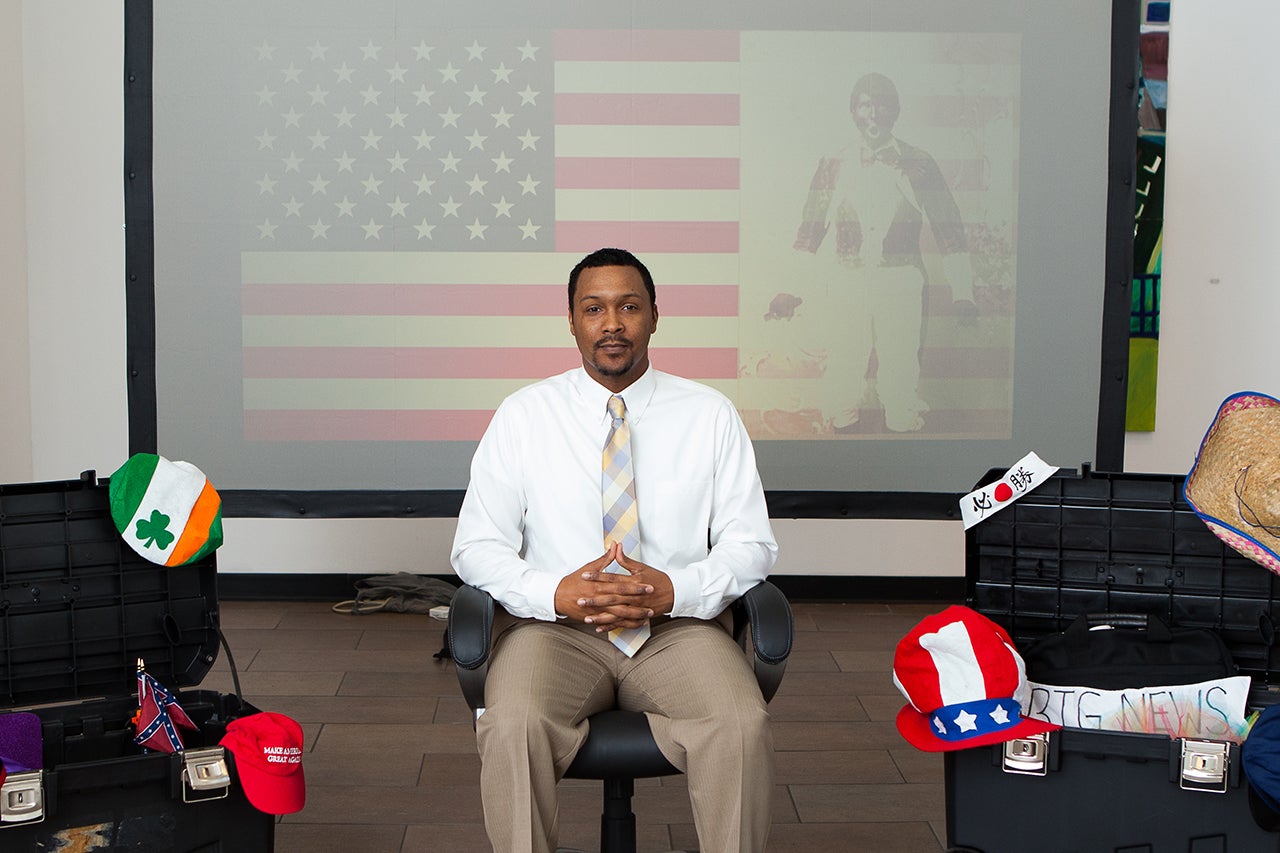They stir us. Awaken us. Move us – not just as individuals, but as a community, as a people, as a culture. The arts are a powerful force. And that force can change the world.
But let’s start with the College of Charleston, where Jason C. White, assistant professor of arts management and arts entrepreneurship, has piloted an arts-based intervention (ABI) program to show how the arts can be used to prevent racial and ethnic stereotyping on college campuses.
Motivated by increasing public accounts of racial and ethnic stereotypes occurring at higher education institutions across the nation, White launched the pilot program – SEE THE DANCE: An Arts-Based Intervention for Reducing Racial and Ethnic Stereotyping in the Student Body – in August 2017 with a test group of first-year CofC students watching a live performance of White’s play, The Dance: The History of American Minstrelsy.
The historic minstrel production, which features blackface clowns and authentic and present-day minstrel images, conveys the history of American minstrelsy so that the audience may understand the lingering perceptions and stereotypes that still exist today. The goal for the test group was to increase students’ knowledge and awareness of racial and ethnic stereotypes.
“I wrote the play over 10 years ago. I’ve rewritten it as an intervention program, so this is different. This is something new,” says White, who was named the 2007 NAACP Best Playwright for the work. “The goal is to show the audience that students are still participating in this. So, at the end of the play, there is no curtain call; the actors just leave the stage. It shows them that this isn’t about the actors. It’s about them.”
Following the performance, the students go straight into a writing activity followed by a small-group storytelling session where they explore instances of being stereotyped and stereotyping others.
“The participatory element is key to arts-based intervention: writing, storytelling, theater,” explains White. “The idea is that these things lead to action. It turns art into action.”
Results from end-of-program surveys showed that 100 percent of the students felt more aware of and more knowledgeable about racial and ethnic stereotyping, more concerned about students who experience stereotype threat and more concerned about the negative effects of stereotype endorsement on college campuses.
Made possible through the School of the Arts Dean’s Excellence Fund, which supports research and development of new works in the performing arts and creative arts, the pilot program is designed as a model for White’s greater vision.
“Based on the results of the pilot, I’d like to test the effectiveness of the ABI at one institution in a longitudinal study,” he says. “The purpose of the study would be to evaluate the degree to which an arts-based intervention reduces bias incidents based on race and ethnicity in a target undergraduate student population.”
White adds, “If this were a mandatory program for freshman students, there could be a real cultural change in the student body over time – and with every generation. It makes sense to get in front of the problem and change that culture.”
As a founding member and head of strategic planning for the Society for Arts Entrepreneurship Educators, White also has an eye on the entrepreneurship aspect of his ABI program.
“By and large, the intervention framework is new to arts entrepreneurship, so this is like lightening striking – everyone is looking at it because it’s something new,” says White. “I really wanted to make an impact with this. But I also wanted to make a difference.”
And he’s doing that by creating a model for other educators and students to use moving forward.
“Arts-based intervention can go anywhere. It can be adapted throughout time and across different cultures to whatever issues are relevant,” he says. “The arts are really good at that. They get at these socio-cultural matters and make us think about them in ways that might make us a little uncomfortable, but that can bring about change.”
In the end, that’s the power of the arts. And, White hopes that as an art form in and of itself, ABI can help change the world for the better.





